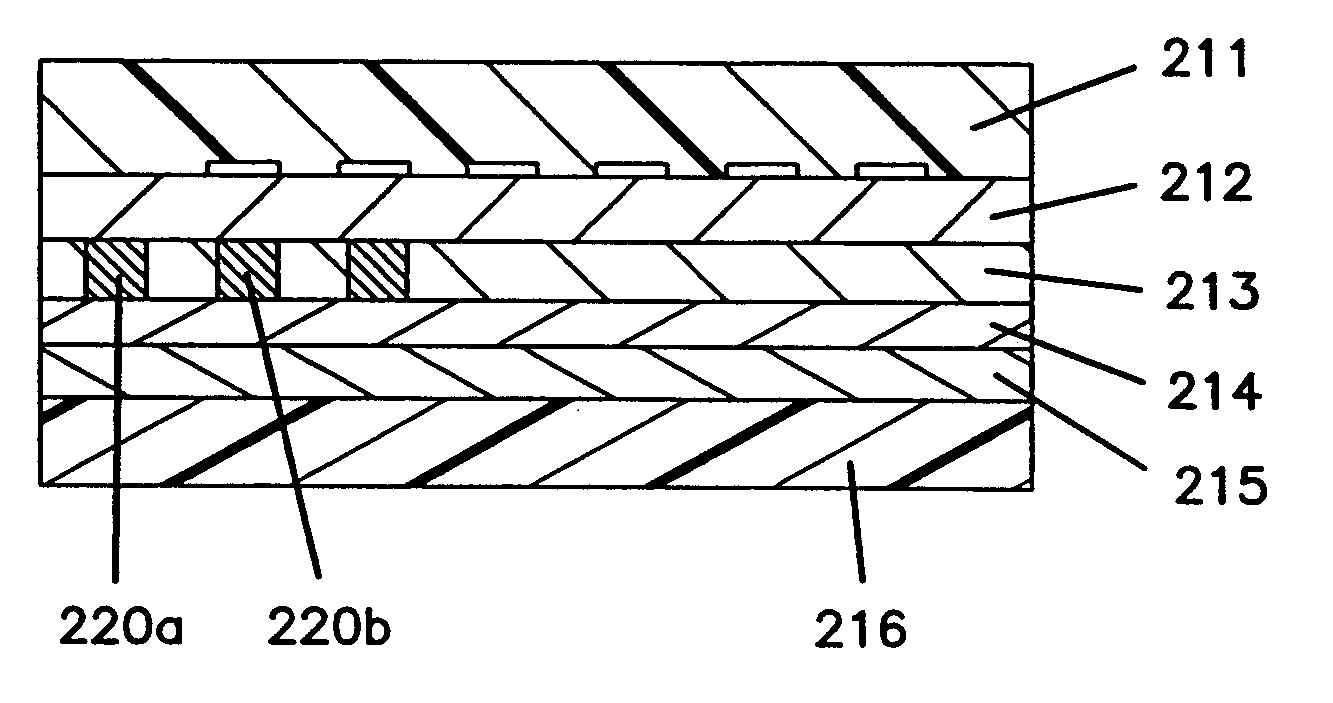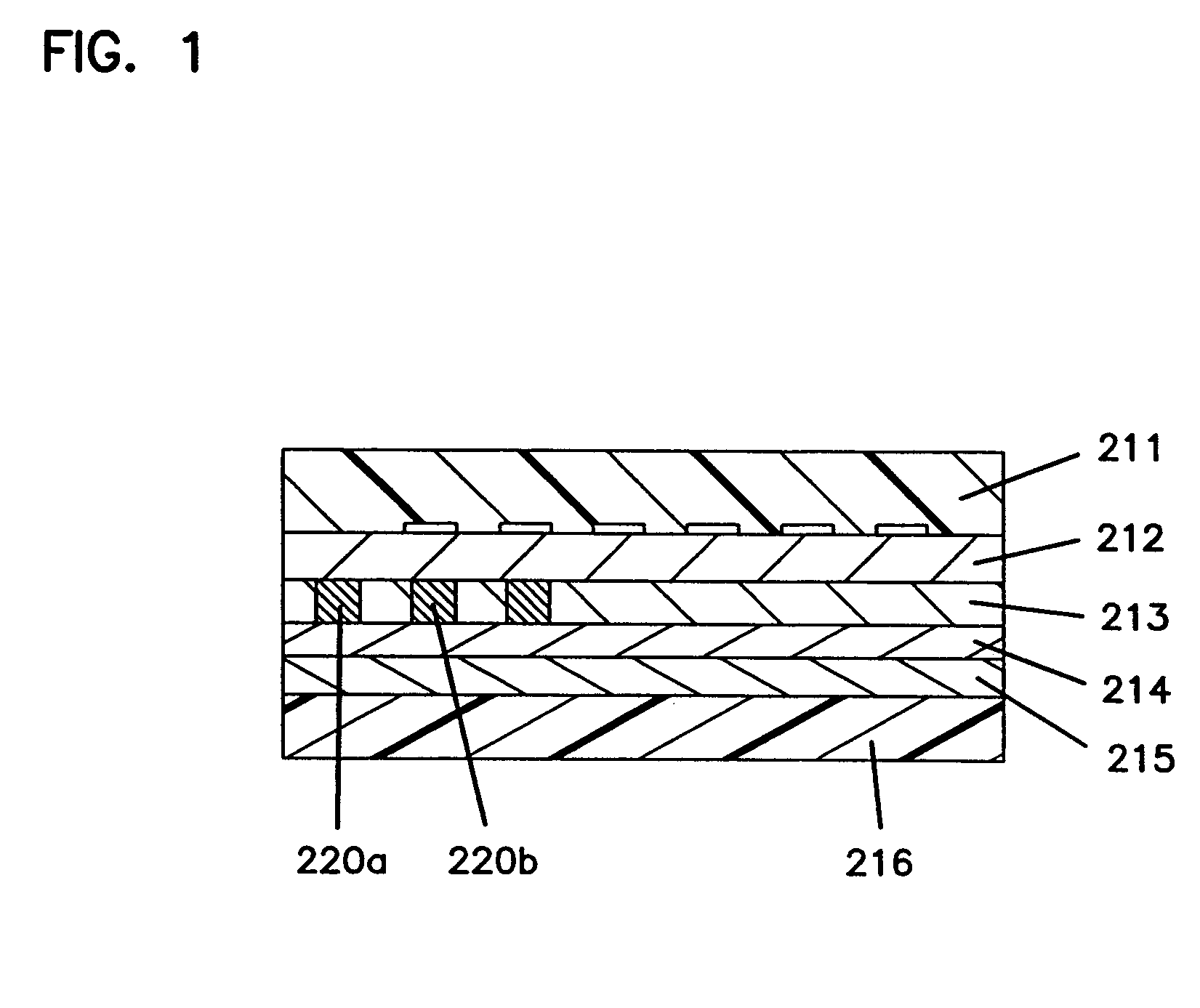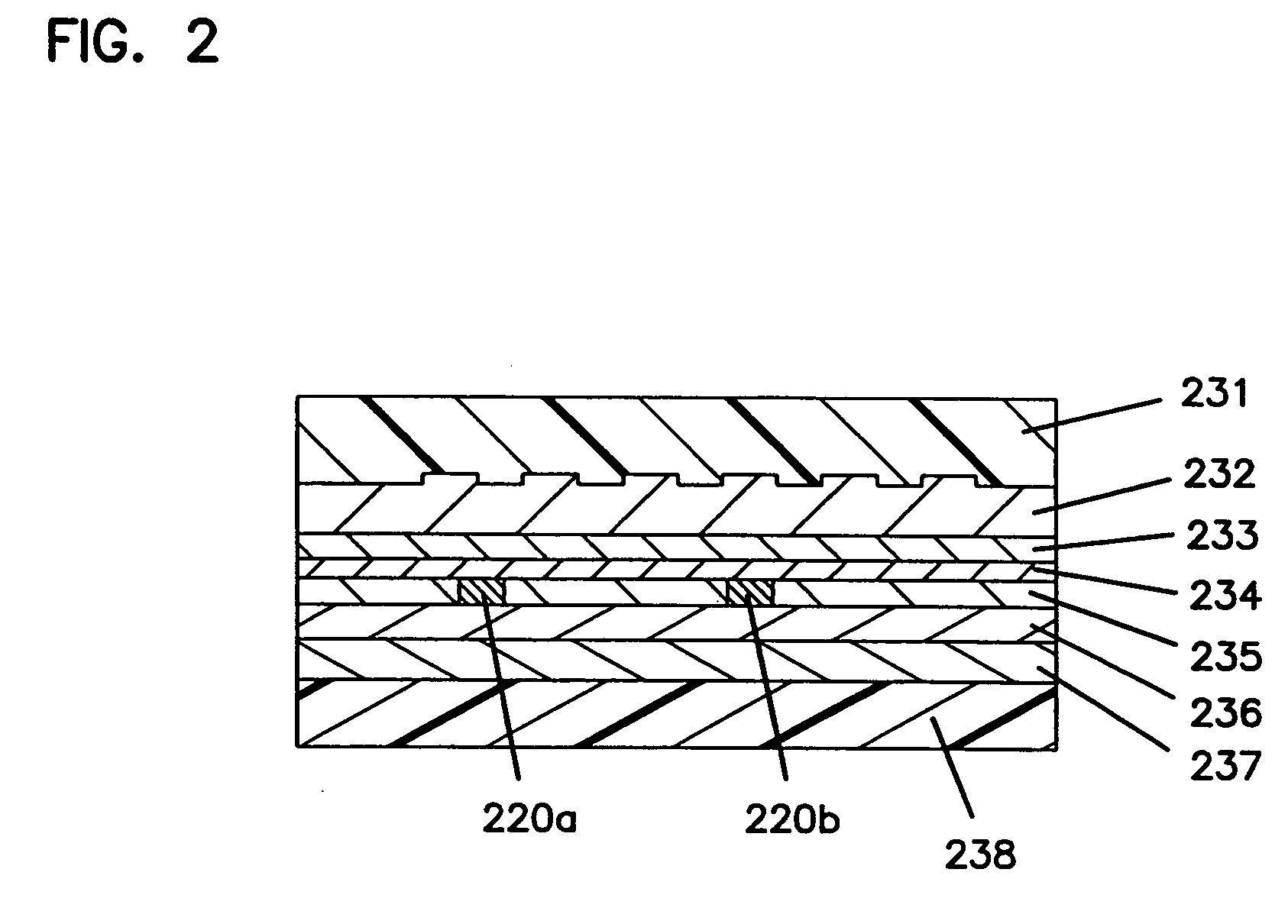Optical disk, method for recording and reproducing write-once information on and from optical disk, optical disk reproducing device, optical disk recording and reproducing device, device for recording write-once information on optical disk, and optical disk recording device
- Summary
- Abstract
- Description
- Claims
- Application Information
AI Technical Summary
Benefits of technology
Problems solved by technology
Method used
Image
Examples
first embodiment
[0113] First of all, the structure of a magneto-optical disk is explained.
[0114]FIG. 1 is a cross-section showing the structure of a magneto-optical disk in a first embodiment of the present invention. As is shown in FIG. 1, a dielectric layer 212 is formed on top of a disk substrate 211, and a recording layer 213 is formed on top of the dielectric layer 212. In the recording layer 213, a plurality of BCA portions 220a and 220b (BCA is one of the formats for write-once identification information) is recorded in a circumferential direction of the disk. On top of the recording layer 213, an intermediate dielectric layer 214 and a reflecting layer 215 are deposited in that order. An overcoat layer 216 is formed on top of the reflecting layer 215.
[0115] Referring to FIG. 8, the following is an explanation of a method for producing a magneto-optical disk in accordance with this embodiment.
[0116] First of all, as shown in FIG. 8 (1), a disk substrate 211, which has guide grooves or pre...
second embodiment
[0135]FIG. 2 is a cross-section showing the structure of a magneto-optical disk in a second embodiment of the present invention. As is shown in FIG. 2, a dielectric layer 232 is formed on top of a disk substrate 231, and a tri-layer recording layer comprising a magnetic reproduction film 233, an intermediate magnetic film 234, and a magnetic recording film 235 is formed on top of the dielectric layer 232. In the recording layer, a plurality of BCA portions 220a and 220b is recorded in a circumferential direction of the disk. On top of the recording layer, an intermediate dielectric layer 236 and a reflecting layer 237 are deposited in that order. An overcoat layer 238 is formed on top of the reflecting layer 237.
[0136] Referring to FIG. 8 of the first embodiment and to FIG. 9, the following is an explanation of a method for producing a magneto-optical disk in accordance with this embodiment.
[0137] First of all, a disk substrate 231, which has guide grooves or pre-pits for tracking...
third embodiment
[0147]FIG. 40 is a cross-section showing the structure of a magneto-optical disk in a third embodiment of the present invention. As is shown in FIG. 40, a dielectric layer 302 is formed on top of a disk substrate 301, and a recording layer 303 of a phase-hangeable material that can reversibly change between a crystal phase and an amorphous phase is formed on top of the dielectric layer 302. In the recording layer 303, a plurality of BCA portions 310 is recorded in a circumferential direction of the disk. On top of the recording layer 303, an intermediate dielectric layer 304 and a reflecting layer 305 are deposited in that order. An overcoat layer 306 is formed on top of the reflecting layer 305. Two optical disks, of which only the first disk has the overcoat layer 306 are laminated by adhesion layer 307. It is also possible to laminate together two optical disks of the same configuration by hot-melting.
[0148] The following is an explanation of a method for producing a magneto-opt...
PUM
 Login to View More
Login to View More Abstract
Description
Claims
Application Information
 Login to View More
Login to View More - R&D
- Intellectual Property
- Life Sciences
- Materials
- Tech Scout
- Unparalleled Data Quality
- Higher Quality Content
- 60% Fewer Hallucinations
Browse by: Latest US Patents, China's latest patents, Technical Efficacy Thesaurus, Application Domain, Technology Topic, Popular Technical Reports.
© 2025 PatSnap. All rights reserved.Legal|Privacy policy|Modern Slavery Act Transparency Statement|Sitemap|About US| Contact US: help@patsnap.com



